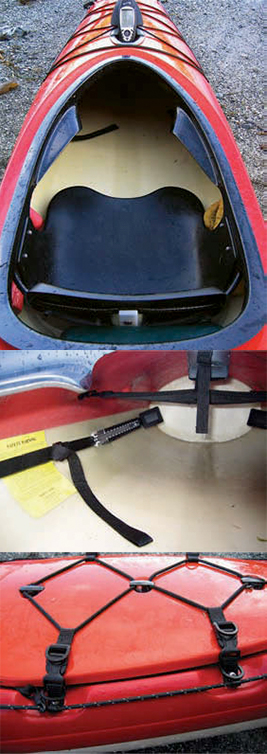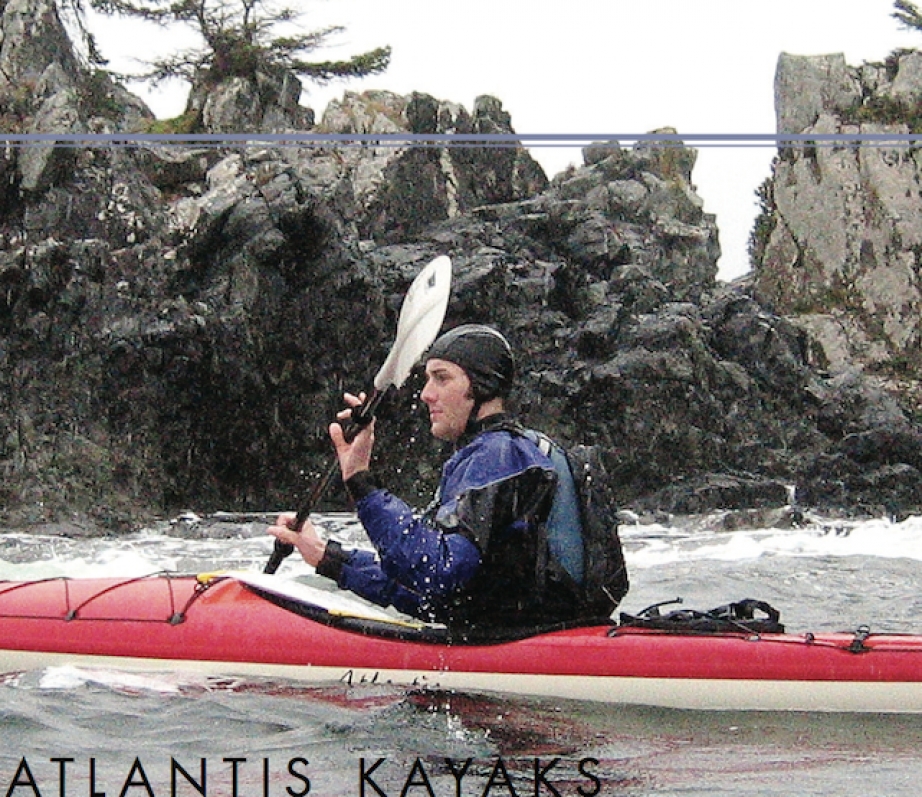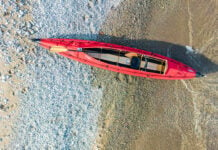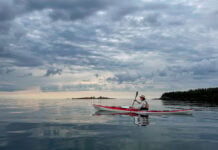If you visit the Atlantis Kayaks workshop, you’re apt to be under-whelmed when you see that it amounts to a small barn in a field near Nanaimo, B.C. Inside, however, the electricity meter is whirling like a dervish, driving heaters and floodlights and other apparatus of industrial boat production. The two-storey shed hums with the mounting intensity of pre-season orders, and you realize that this is what it looks like when big kayak companies get their start.
Atlantis Kayaks is Robin Thacker, a moulding expert who came to kayak building by happenstance. He once moulded parts for jet engines and has another business building scale models of multi-million dollar flight simulators. In his spare time he races bathtubs, but that story will have to wait for another review.
Thacker discovered kayaking when he moved to B.C. in the 1990s. As a builder, he wasn’t about to buy a boat from somebody else. He went ahead and designed his own, selling the Aurora design to Seaward five years later when he was through. But Thacker had caught the bug and in 2003 he started Atlantis Kayaks.
Atlantis Titan VI Specs
Length: 18′ 3″
Width: 24″
Depth: 13″
Weight: 58 lbs glass
Total volume: 392 L
Total storage: 192 L
Cockpit: 31″ x 17″
MSRP: $3,495 CAD glass
So, a novice kayaker designs his own kayak. At first this story sounds like the episode of The Simpsons where Homer gets to design a car for the common man. His tacky La Cucaracha air horn and shag carpeting didn’t catch on.
But Thacker is one outsider who knows the right way to bring fresh perspective to an industry. Why not add an integrated GPS system? Why not find a way to attach foot braces to a boat without drilling holes in the hull? And why not ask the outfitters what they want in a kayak and then build it for them?
On The Simpsons, Homer’s car cost $82,000 and bankrupted a company. In real life, the Thacker kayak is competitively priced and appears to be propelling Atlantis toward mainstream success.
The Titan VI is a low-volume version of Atlantis’ flagship Titan. It’s the Titan hull with a lower deck for a tighter fit and sportier feel. Our test confirmed what Atlantis’ outfitter customers already know: Titans are super-stable, beginner-friendly, roomy, durable and attractive.
Fully loaded, our Titan VI took a lot of work to flip over. It tracked easily and heavier paddlers could tilt it and shorten the waterline for tighter turns. We had a comfortable ride in 5-meter seas and 20-knot winds and felt relaxed enough while drifting to take photographs in conditions that would have made for white-knuckle paddling in many other boats.
The Titan VI is 24 inches wide but cruised for us at speeds similar to narrower kayaks of its length. “It’s not the width that determines speed,” the designer explains. “It’s the footprint.” Maybe that’s a bathtub-racing secret.
Medium to large paddlers seeking an expedition-capacity kayak should take a close look at the Titan VI. This is a classic North American-style design that excels in comfort, capacity and stability, with innovative construction and clever features that set it apart from the competition.
Soundproof bubble-dome for the kids? (top)
Unlike Homer Simpson’s bells and whistles, Robin Thacker’s extra features are intelligent and practical. Consider the unprecedented option of an integrated GPS cradle for $295 CAD (GPS not included).

The stiff fiberglass seat back provides great support, although it may get in the way during rescues.
Everything but the Super Big Gulp holder (middle)
Comfortable, padded thigh hooks and a low deck provide a sporty fit for a large-volume boat. The Werner foot rails operating the Feathercraft rudder screw into a moulded insert in the hull and connect to a strap offering a second foot adjustment that’s always within reach. We’d like to see a deeper, grooved cradle for the rudder on the rear deck to prevent the foot pedals from moving when the rudder isn’t in use.
Excellent detail work includes fiberglass-taped inner and outer seams and bulkheads; Kevlar-reinforced bow and stern; standard cockpit cover and optional underdeck mesh bags in the cockpit and rear hatch ($109.90 CAD).
Cucaracha proof and then some (bottom)
The 72-liter bow hatch and the 120-liter stern hatch (shown here) are sealed by a two-piece system of airtight neoprene with a flush fiberglass cover. D-rings allow paranoid paddlers to attach padlocks to their hatch buckles—a deterrent to anyone coveting the reserve gummy bear stash. A fishing rod, paddle or tripod could be stowed under the hatch bungees.









